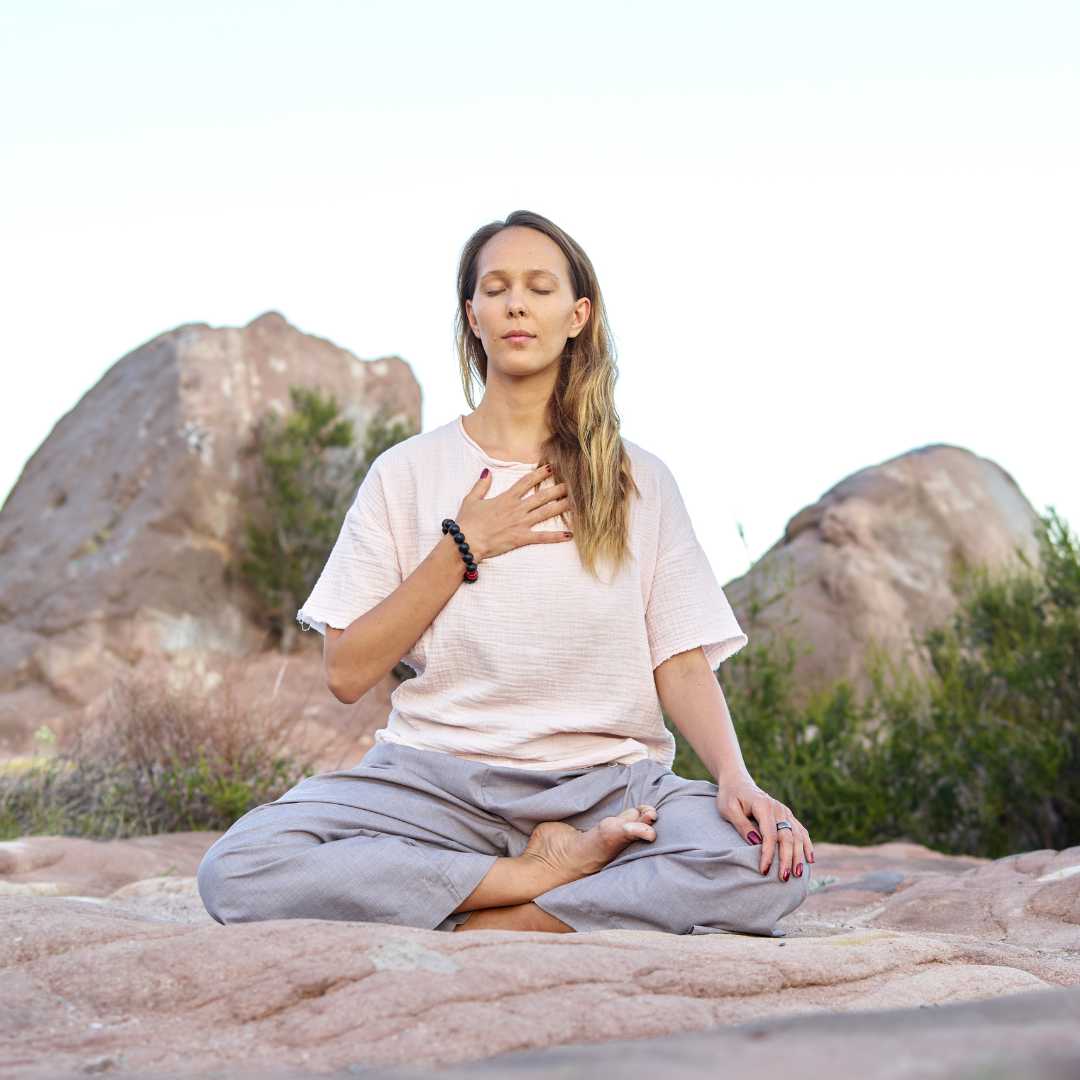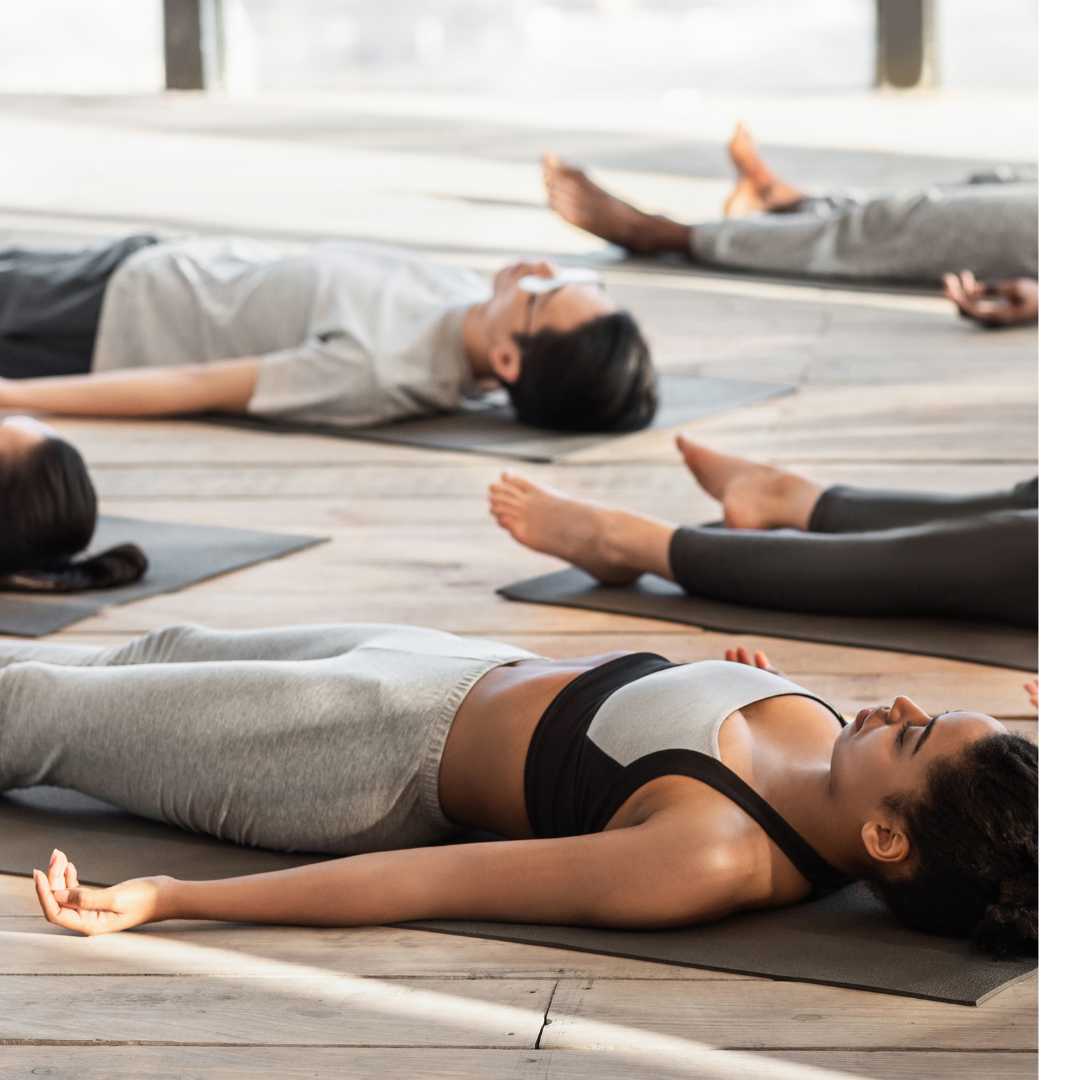Body Scan Meditation for Chronic Pain

Chronic Pain Can Be Managed with Meditation that Brings a Kind Awareness to the Body.
Body scan meditation can be very helpful in managing chronic pain. Often with chronic pain you may try your best to ignore the physical sensations or you may hyper-focus on sensations. Both of these may increase the negative impact of pain on the quality of your life. Meditation, and specifically practicing a mindful body scan meditation, can help.
When Jon Kabat-Zinn started teaching Mindfulness Based Stress Reduction in the 1970s, he began working with people that had chronic pain who had tried many different approaches to help alleviate their pain. What he found was that mindful meditation worked! It worked to help people decrease the suffering they felt related to physical or emotional pain. Even if the pain intensity level remained the same, the meditator reported that the symptoms had less of a negative affect on quality of life.
Therefore, one of Jon Kabat-Zinn’s foundational practices was, and still is, a body scan meditation.
Mindful Meditation can help with chronic pain by teaching you to develop awareness of what is happening in the present moment in a kind, caring, non-judgmental way. By learning to notice and allow sensations to be, without reacting to them or getting carried away by unhelpful stories of them, you can reduce your emotional suffering and perceive pain differently. An unintentional side effect of a mindful body scan practice can be relaxation, decreased muscle tension, enhancement of coping skills, and even improved sleep. One key here is that for benefits to be felt fully and for them to last, a consistent practice should be developed. Borrowing from a common recovery expression…it works if you work it.

Body Scan and Mindful Meditation
The first foundation of mindfulness is mindfulness of the body. The body is our starting point, our anchor, to the present moment. Mindfulness is an embodied practice. To be embodied means to be fully present in and connected to one’s physical body and experiencing sensations, emotions, and perceptions through it. It involves being aware of and engaged with the physical experience of being alive. With this mindful practice, we work on the capacity to be fully awake in the body, to be fully human, to live life fully here and now.
Staying present in the body can be difficult especially if you have chronic pain. It seems that as humans it’s our nature to always be trying to leave the body, especially more and more as technology develops is so easy to find escape. This makes sense because as Tara Brach notes, “The bodily experience is out of control. It’s just happening. Our survival instinct is to try to control things. To really inhabit this body is to be willing to surrender to what feels out of control.” Especially if there has been trauma, especially physical trauma, it can be frightening to return to the body, to the unpredictability of it, the out-of-control nature of it. So do this slowly, gently, kindly, without judgment. it may be beneficial to get the support or assistance of a counselor or therapist.
During a body scan meditation, practice self-care. Before beginning the practice find a comfortable position. Often a body scan is done in a lying position but if it more comfortable for you, you may sit or recline. Support your body with pillows or cushions and use blankets or layers of cloths to help maintain a comfortable body temperature. Some examples of self-care in the moment of meditation may be to return your attention to your breath, to open your eyes, to look around, focus near, focus far, change your physical position, or get up and walk around. Put one hand on your heart, give yourself a hug, hold your own hands. Consider other ways to take of yourself. What has brought you a sense of feeling “safe-enough” in the past?

Why Stay Connected or Reconnect to Physical Sensations When you Have Persistent Pain?
You may think of the consequences of disconnecting from the sensations of your body like avoiding a crying child. You may distance yourself from the child so you don’t hear the cries as loud. But then you still hear them a bit so you need to dampen the sounds a little bit more and maybe you do this by putting in earplugs or listening to music to distract you. But this avoidance, this pushing away takes energy. This may bring a sense of fatigue, exhaustion, anxiety…you are using a lot of energy to avoid, but what you sense at some level is still a crying (a suffering) in the background wanting to be heard. So you may develop more unhealthy escape habits: food, alcohol, unhealthy relationships, social media addiction.
You can also think of this unhealthy avoidance, like trying to cover up a pimple. You can cover it up with make up or Band-Aids but it’s still there festering just under the surface. On the other hand, if you are like me, you know first hand what it’s like to hyper focus on that pimple. Too much thought amplifies negative emotions and I start to see only the pimple when I look at my face, I am unable to notice anything positive. Then the over-focusing and picking happens and tends to just make the situation worse. What is needed in these instances is skillful attention, awareness, presence and then, possibly, skillful action.
Another consequence of disconnecting is that you cannot avoid, blunt, or push away the negative and still be able to feel the positive. You become cut off from the heart, from life, from creativity–cut off from the wisdom of the body. So to heal, perhaps turn towards the suffering, hold it gently get to know it, then act, skillfully, and wisely.
This practice of mindfulness of the body is to cultivate connection to the body. To connect, reconnect, connect, more deeply, connect, gently, slowly, compassionately, connect with curiosity. Remember that if you left, you left for a reason. Honor this. Some mindfulness of the body practices besides a body scan are: observing the breath, walking meditation, noticing physical sensations as they arise and describing these sensations, or contemplating the impermanence of the body.

Explore Body Sensations with Mindful Body Scan
When befriending your body and re-acquainting yourself to your areas that you may have neglected or tried to ignore for a while, it helps to focus your awareness on areas of your body and get familiar with direct physical sensations rather than thinking about or intellectualizing about what is happening. Examples of what you may notice: warmth, tingling, electric, flowing, smooth, static, soft, tense, relaxed, dense, light, fuzzy, sharp, achy, dull, permeable, porous, liquid, light, heavy, bubbly, deadness, numb, chilly, cold, hot, foggy, clear, tight…You may at times want to simply practice labeling your sensations as pleasant, unpleasant, or neutral. Without judging, just notice how you relate to the sensation. An additional practice can be to stay a bit longer with the pleasant sensations and really absorbing this. You may also stay a bit with the neutral sensations and practice exploring more and more subtle sensations.
Practice staying focused on sensations by asking yourself sensation-oriented questions. Ask things like “Is there anything else I notice about the sensation?” rather than “Why am I feeling this?” or “What does this sensation mean?” These last questions lead you back into thought and emotion-oriented processing. Get curious about the sensation itself. Ask “Is there anything else that I notice?” “Does the sensation intensify, lessen, or no change at all?” “Does it have a size, shape, density, location, or sense of direction or substance?”

A Body Scan Meditation Practice for Chronic Pain
The key element with the body scan is the systematic arriving in different parts of the body. And without interfering, opening to the experience that’s there. Over time you will practice building the capacity to tolerate more and more sensations. You will notice that you can feel the sensation while uncoupling them from strong emotions and unhelpful stories.
As you intentionally focus your attention on each body part, remember to reflect on these key points:
- notice what sensations are present in the current moment (see list of some possible sensations above)
- Are there differences in sensation from side to side?
- Practice just noticing, notice without judgement, notice without the need to change anything.
- Be curious, like you are noticing for the first time.
- Remember it’s ok of you don’t notice anything, just note this.
- Do sensations change just by you paying attention?
- Do stories arise is certain areas? can you notice this and them them go?
